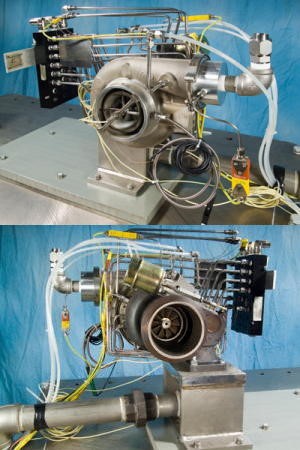Photo: Two views of an oil-free turbocharger developed by NASA. Photo courtesy of NASA Glenn Research Center (NASA-GRC).
Have you ever watched cars buzzing past you with sooty fumes streaming from their tailpipe? It's obvious exhaust fumes cause air pollution, but it's much less apparent that they're wasting energy at the same time. The exhaust is a mixture of hot gases pumping out at speed and all the energy it contains—the heat and the motion (kinetic energy)—is disappearing uselessly into the atmosphere. Wouldn't it be neat if the engine could harness that waste power somehow to make the car go faster? That's exactly what a turbocharger does.
Car engines make power by burning fuel in sturdy metal cans called cylinders. Air enters each cylinder, mixes with fuel, and burns to make a small explosion that drives a piston out, turning the shafts and gears that spin the car's wheels. When the piston pushes back in, it pumps the waste air and fuel mixture out of the cylinder as exhaust. The amount of power a car can produce is directly related to how fast it burns fuel. The more cylinders you have and the bigger they are, the more fuel the car can burn each second and (theoretically at least) the faster it can go.
One way to make a car go faster is to add more cylinders. That's why super-fast sports cars typically have eight and twelve cylinders instead of the four or six cylinders in a conventional family car. Another option is to use a turbocharger, which forces more air into the cylinders each second so they can burn fuel at a faster rate. A turbocharger is a simple, relatively cheap, extra bit of kit that can get more power from the same engine!
Post time: 17-08-22
